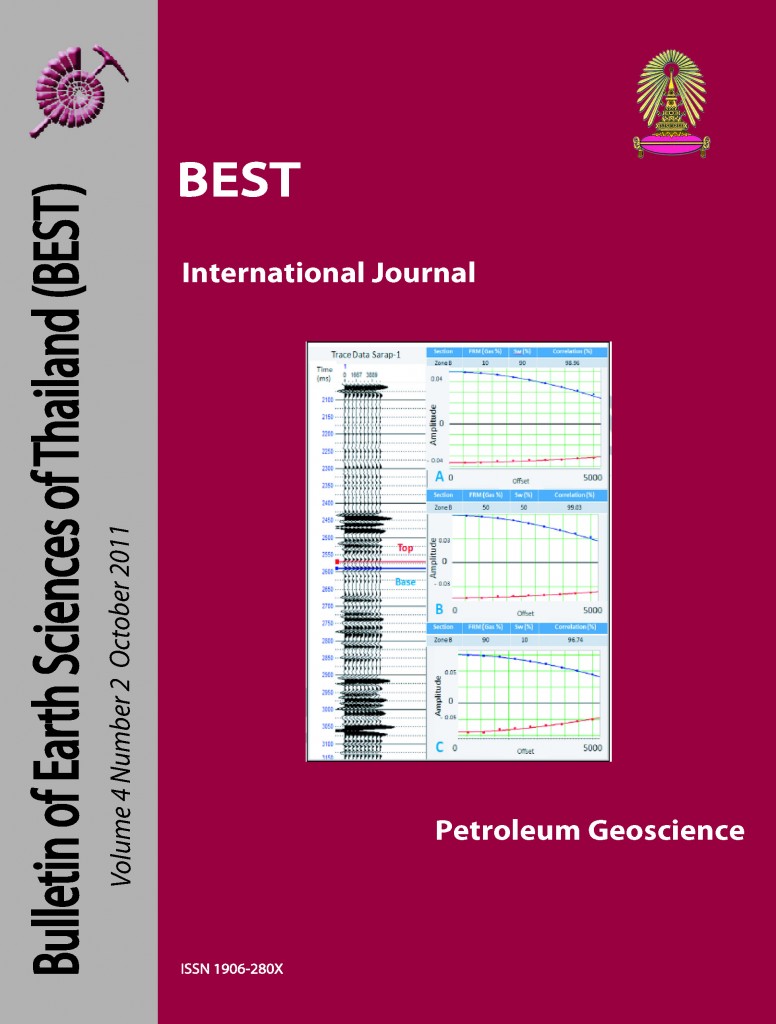Sand Distribution and Depositional Environments East Yala Field, Pattani Basin, Gulf of Thailand
Main Article Content
Abstract
The E to F interval is the main hydrocarbon-bearing stratigraphic unit in the East Yala Field, Pattani Basin, Gulf of Thailand. The key reservoirs comprise mainly fluvial sands that have a stratigraphically complex architecture resulting in high uncertainties in reserve estimation. This study attempts to predict their distribution, geometry and identify depositional environments based on an integrated investigation of regional stratigraphy, wireline logs and seismic based analysis. The wireline log data from 72 study wells were used to determine depositional environments, characterize reservoir architectures and investigate sand distributions. Based on wireline log, depositional facies were interpreted as channel fills and overbank/floodplain deposits in an alluvial plain environment. The main north-south and northwestsoutheast orientations of various sand bodies were observed in sand distribution maps. Seismic attribute analysis was used to delineate sand body orientations, geometries and their areal distributions. Results of the seismic based analysis show a good relationship between high amplitude anomalies and the presence of well log-derived sand interpretations. The evolution of the sand systems is from a restricted thick fluvial channel at base changing to broad bifurcated channels with a slight eastward shift in deposition in the middle. A broad lobe-shaped crevasse splay overlays this system, restricted to the north due to a transgression-caused backstepping. These findings can be used for well planning for future drilling projects and for generating reservoir simulation models for forecasting production profiles.
Article Details

This work is licensed under a Creative Commons Attribution-NonCommercial-NoDerivatives 4.0 International License.
Copyright © 2008 Department of Geology, Faculty of Science, Chulalongkorn University. Parts of an article can be photocopied or reproduced without prior written permission from the author(s), but due acknowledgments should be stated or cited accordingly.
References
Bustin, R. M., & Chonchawalit, A., 1997. Petroleum Source Rock Potential and Evolution of Tertiary Strata, Pattani Basin, Gulf of Thailand, AAPG Bulletin, v. 81, no. 12, p. 2000-2023.
Jardine, E., 1997. Dual petroleum systems governing the prolific Pattani Basin, offshore Thailand. Petroleum systems of S.E. Asia and Australasia Conference, Jakarta, May 21-23, 1997, p. 351-363.
Watcharanantakul, R., & Morley, C. K., 2000. Syn-rift and post-rift modeling of the Pattani Basin, Thailand: evidence for a ramp-flat detachment. Marine and Petroleum Geology, v.17, p. 937-958.


